The Jewish Traveler
Feature
Trends in Kibbutz Hospitality
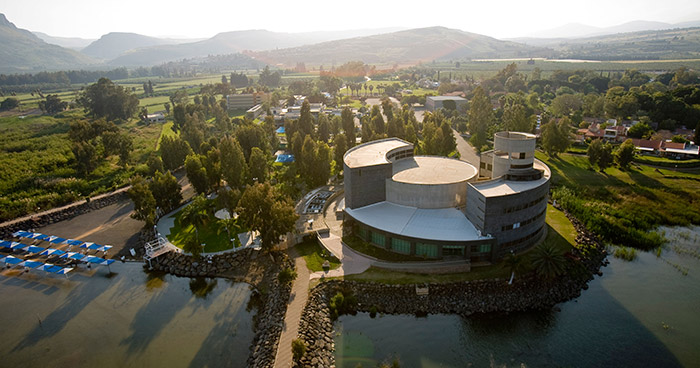
Kibbutz is “still the sexiest word in the world, even though most kibbutzim no longer have their original collective format,” David Duvdevani of Kibbutz Gesher Haziv, said in an attempt to explain the enduring attraction of Israel’s unique, century-long social experiment that slowly gave rise to an equally unique travel industry.
“Tourists know that kibbutz accommodations are good value for money, informal, clean, in a garden setting, in nature and near places to tour,” added Duvdevani, whose 37 years in hotel management and marketing have given him a broad view of the country’s offerings.
Nearly all of Israel’s roughly 270 kibbutzim provide accommodations, ranging from a yurt at Hanita in the Western Galilee to the four-star hotel at Ginosar on the shores of the Kinneret. Four kibbutzim, including Kibbutz Ein Gedi at the Dead Sea, have true spas of thermal mineral baths and others, Duvdevani said, use the term more loosely to refer to amenities such as whirlpools, saunas and hot stone massages. All have swimming pools and the overwhelming majority feature kosher dining halls.
Not only are most kibbutzim located in the countryside and surrounded by lush gardens, many border on, or incorporate, nature reserves. Kibbutz Dan in the North, at the foot of Mount Hermon and at the start of the Israel National Trail, is adjacent to the Tel Dan Nature Reserve, with its burbling brooks, wading pool, hiking trails and archaeological remains dating back 5,000 years. Kibbutz Kalia in the South, four miles from the Dead Sea, is near the Ein Feshkha Nature Reserve and its series of pools for swimming and surprisingly rich flora and fauna.

And Kibbutz Lotan, 30 miles north of Eilat, is home to the Lotan Nature and Bird Reserve, a verdant sanctuary in a desert area that houses birds year-round and where, in the spring and in fall, hundreds of millions of migrating hoopoes, red-throated pipits, yellow wagtails and a host of other avian guests stop to rest.
How did kibbutzim, founded as agricultural collectives, get into the hospitality business? The reasons are diverse. At Gesher Haziv, established in 1949 just north of Nahariya, it was a matter of simple necessity, according to Rose Schwartz, who managed the guest house for seven years.
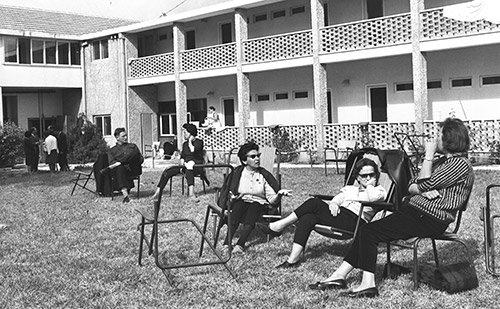

“Many of the founding members were from North America, and when their families came to visit in the 1960s, there were no extra rooms,” she said. The kibbutzniks had lived in tents at first, then in simple wooden cabins and finally in permanent homes. The cabins were converted into hospitality rooms until a guest house was built. Today, the kibbutz has accommodations less than a mile from the pristine Achziv beach on the Mediterranean.
Before kibbutzim developed hospitality for tourists, some operated so-called relaxation homes or convalescent homes, where members of the Histadrut, the General Organization of Workers in Israel—many of whose jobs involved manual labor—would spend their annual vacations. Their requirements were basic. “People would sit on deck chairs, read a book, swim in the pool and eat five meals a day,” Duvdevani said.
The convalescent home experience with its five meals a day was an integral part of life in the early years of the state and was immortalized in humorous songs and in skits such as the now classic “Ochel, Kadima, Ochel” (Food, Go for it, Food), with lines like “You’re not really that hungry, but the factory’s paying for it.”
One such home was built in 1953 at Kibbutz HaGoshrim, north of the Kinneret. The main building incorporated the arches and stone pillars of a winter palace erected in the 1930s for Mahmoud Fa’ur, the Bedouin ruler of the area, who later sold the land to Keren Kayemeth LeIsrael-Jewish National Fund. The highlight for guests was sitting on deck chairs and dabbling their feet in the cool water of the Jordan River’s tributaries, which flow through the kibbutz.
When the vacation practices of Histadrut members evolved, the convalescent homes re-emerged as amenity-rich hotels. Today, HaGoshrim Hotel and Nature, for example, has retained the arches and stone pillars of the Bedouin palace, but now also features a luxurious spa with an authentic Turkish hammam as well as a waterfall, restored windmill and shaded riverside trail.
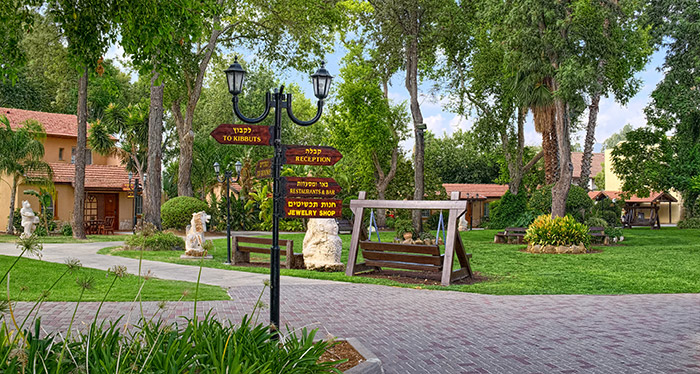
A third development in kibbutz hospitality grew out of the departure of many young adults from kibbutzim at the end of the 1980s, Duvdevani said. This created a surplus of rooms, which were renovated and branded first as “guest rooms” and “bed and breakfasts” and then as “country lodgings.” Initially intended for Israelis, the rooms were spartan, but were gradually upgraded. Now, there are two levels of kibbutz accommodation: hotels, which are typically four star, and country lodgings, mostly three and a few four star. (Some kibbutzim offer both types.) Unlike hotels, Duvdevani said, country lodgings are usually one-story structures, two stories at most.
The dining hall—the tribal hearth where kibbutz members would meet and socialize—was one of the casualties of the privatization of many kibbutzim following the financial crisis of the 1980s. Today, a small number of dining halls still function, including those on Kibbutz Afikim near the Kinneret and Kibbutz Sdot Yam, just south of Caesarea.
Another highlight of a kibbutz stay is learning about the collective way of life and how it has developed over time. Today, dozens of guides run tours of various kinds. In Kibbutz Afikim, a collective that is not privatized, kibbutznik Amotz Brotman takes guests on tours in which he sings Israeli songs, strums on his guitar and recounts with humor a century of kibbutz history. He leads visitors to a series of communal buildings, like the dining hall and former children’s quarters, as well as to Afimilk, the kibbutz-owned agrotech firm whose computerized systems oversee the management and milking of millions of cows worldwide.
 Missed our webinar? Watch the recording here.
Missed our webinar? Watch the recording here.
And in the constantly evolving world of kibbutz hospitality, some tours reflect the times. Kibbutz Lotan provides an hourlong eco tour that showcases its organic food production, renewable energy and recycling. Similarly, the tour in nearby Kibbutz Ketura, which celebrates its 50th anniversary this year, focuses on sustainability projects.
One guide recalled an incident in the 1960s, when Kibbutz Ayelet HaShachar, 20 miles south of Kiryat Shmona, was a pioneer of kibbutz hospitality. One day, another guide with whom he was friendly got up early, asked the person in charge of the communal refrigerator for all his frozen chickens and promised to repay him. Then he hung the chickens on the trees in the apple orchard. After showing his tour the cowshed and the chicken coop, he said, “The pioneers in Israel can grow everything on trees—even chickens.”
Then he brought them to the orchard, and they all burst out laughing.
The chickens in the apple orchards may be gone, but kibbutz hospitality continues to attract and to offer something for everyone.
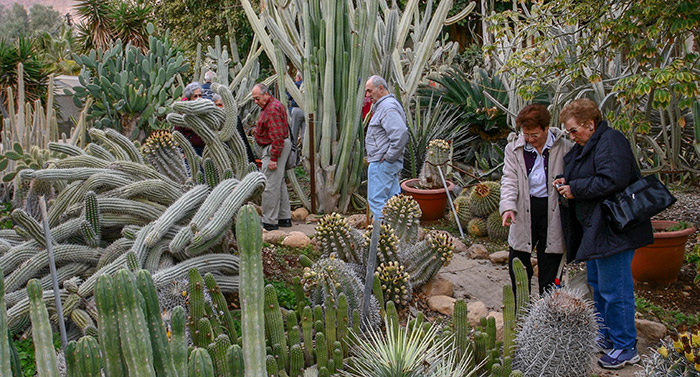
IF YOU GO
Kibbutzim present a cornucopia of attractions. For a wide listing of options, consult Kibbutz Visit.
HORSEBACK RIDING: Yair Sharet, the founder of Sirin Riders, is a third generation kibbutznik who lives on Kibbutz Magal, halfway between Tel Aviv and Haifa. He loves to present Israel to visitors who share his passion for horseback riding. His year-round riding vacations set out from a point arranged with the client and include a tour of his birthplace, Kibbutz Degania Bet, just south of the Kinneret.
OUTDOOR ADVENTURE: Kayaking and rafting on the Jordan River, on routes suitable for families and/or for the more adventurous, are among the attractions at Kibbutz Kfar Blum in the Upper Galilee. Its Top Rope adventure park features a 39-foot rock climbing wall, a rope bridge and a zip line over the river.
BEACH ACCESS: Twenty miles south of Haifa, the warm waters of the Mediterranean beckon visitors to the Nahsholim Holiday Village Kibbutz Hotel. Walk out a few yards from the premium rooms—some with their own pools—and you’re on a private beach. An added attraction is HaMizgaga-Museum of Archaeology and Glass.
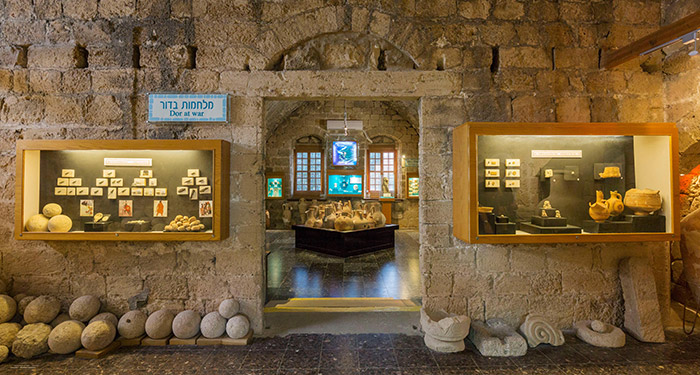
BOTANICAL GARDENS: Numbered markers guide visitors on the walking trail at Kibbutz Ein Gedi, whose gardens are cared for by members. Various cacti, a large African sycamore fig tree that has developed a furry trunk to prevent dehydration, date palms, huge African baobab trees and the towering kapok tree are among the sights.
HISTORY: Kibbutz Lohamei Hageta’ot in the Western Galilee is the site of the first Holocaust museum in the world: The Ghetto Fighters’ House-Itzhak Katzenelson Holocaust and Jewish Resistance Heritage Museum. The museum and kibbutz, whose name translates to “ghetto fighters,” were founded by Holocaust survivors in 1949. The Yad Layeled Children’s Memorial Museum, opened in 1995, introduces children to the Holocaust.
ARCHAEOLOGY: A detailed zodiac mosaic covers the floor of the sixth century C.E. Beit Alpha Synagogue, today part of a national park adjacent to Kibbutz Beit Alpha just northwest of Beit She’an. One section depicts the biblical story of the binding of Isaac. The central panel features the 12 signs of the zodiac surrounding Helios, the Greco-Roman sun god, labeled with their Hebrew names. Visitors can also tour a Japanese garden in neighboring Kibbutz Heftziba.
ART: In 1925, Ein Harod in the Jezreel Valley—the first large-scale kibbutz—became the center of the countrywide kibbutz movement. In 1937, member Haim Atar inaugurated one of the first art institutions in Israel. In 1948, the museum’s collection—today known as the Mishkan Museum of Art—was moved to an imposing building designed in a modernist style by architect and kibbutz member Samuel Bickels.
MUSIC: The Upper Valley Voice of Music Festival, offering chamber music performed by the best artists from Israel and overseas, is held in July at Kfar Blum, along with the Voice of Music Festival for Children.
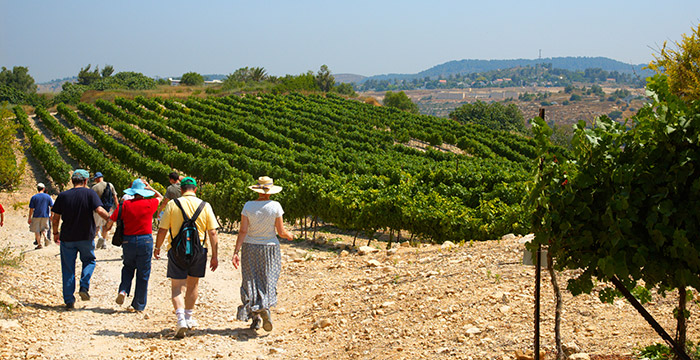
WINERIES: The estate winery of Kibbutz Tzuba, in the Judean Hills outside Jerusalem, provides tastings of its kosher vintages. On Fridays, a rich brunch spread likewise includes a tasting, followed by a tour of the kibbutz. The Kiftzuba amusement park and Galita Chocolate Farm will appeal to children.
ORTHODOX: Kibbutz Lavi in the Lower Galilee, founded in 1949 by observant young immigrants from the United Kingdom, operates a four-star hotel with kitchens certified as mehadrin kosher—one of the highest standards of kashrut certification in Israel. The pool requires a modest dress code and offers separate hours for men and women as well as family time. Check-in, checkout and driving of cars are not allowed on Shabbat and Jewish holidays.
Esther Hecht is a journalist and travel writer based in Jerusalem.










 Facebook
Facebook Instagram
Instagram Twitter
Twitter
Eileen Lash says
I’m planning on going back to Israel for the 6th time in the fall. I’d like to do something different. Can you send me information?
Arielle Kaplan says
Check out our story on Hadassah tours all year long! https://www.hadassahmagazine.org/2023/06/29/tours-of-israel-unlike-any-other/